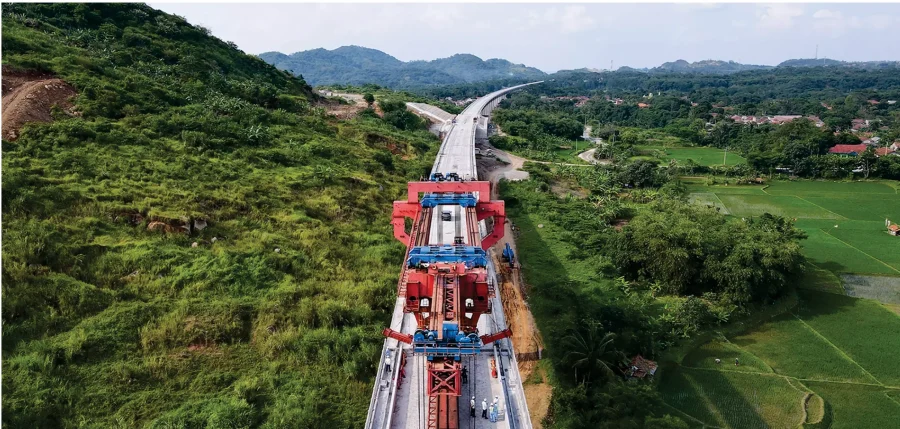The Belt and Road Initiative (BRI) has emerged as a transformative force in the realm of international cooperation, promising a path of mutual benefit, health, recovery and sustainable growth. President Xi Jinping’s vision and commitment to fostering high-quality BRI cooperation, as outlined in his book “The Governance of China” Volume IV, reflects China’s dedication to global partnership and development. In this article, we delve into the chapters “High-Quality Belt and Road Cooperation,” “Build a Closer Belt and Road Partnership,” and “Strive for New Progress in High-Quality Belt and Road Development” to explore the principles and actions that guide this monumental initiative.
In June 2020, President Xi Jinping articulated a vision for “High-Quality Belt and Road Cooperation.” This vision marked a paradigm shift in the BRI’s evolution, emphasizing not only the scale and scope of infrastructure development but also the quality and sustainability of these projects. The focus moved beyond merely connecting countries through physical infrastructure to forging economic, social, and environmental linkages that would benefit all stakeholders involved.
One of the key highlights of this vision was the emphasis on sustainability and green development. President Xi stressed the importance of ecological and environmental preservation, underscoring that the BRI should not only contribute to economic growth but also be a vehicle for environmental protection. This commitment to environmental sustainability has been evident in China’s investment in renewable energy projects, afforestation initiatives, and environmentally friendly infrastructure development in BRI partner countries.
Moreover, President Xi’s call for high-quality Belt and Road Cooperation extended to the social and economic realms. The vision emphasized people-to-people connectivity, cultural exchanges, and improved livelihoods for the citizens of participating nations. Education, healthcare, and vocational training were identified as critical areas for cooperation, with the ultimate goal of enhancing human capital and fostering social well-being.
Fast forward to April 2021, and President Xi Jinping reiterated China’s commitment to the BRI in the chapter “Build a Closer Belt and Road Partnership.” The world was still grappling with the challenges posed by the COVID-19 pandemic, which had exposed the vulnerabilities of global supply chains and underscored the need for strengthened international cooperation.
The chapter also emphasized the importance of green and sustainable development in line with the broader global shift towards environmentally responsible practices. The BRI, in its high-quality form, would contribute to the goals of environmental conservation, reducing carbon emissions, and transitioning to a more sustainable, low-carbon economy.
Furthermore, the notion of a “closer partnership” extended to cultural exchanges and people-to-people ties. The BRI was seen as a platform for intercultural dialogue, enabling countries to share their unique cultural heritage, fostering mutual understanding and friendship. This cultural exchange was not limited to the exchange of traditions and practices but also extended to education, science, and technology, reflecting China’s commitment to sharing knowledge and expertise.
The most recent chapter, “Strive for New Progress in High-Quality Belt and Road Development,” dated November 19, 2021, offers a forward-looking perspective on the BRI’s evolution. It underscores China’s commitment to continuous improvement and adaptation to changing global circumstances.
In the wake of the COVID-19 pandemic, President Xi Jinping reaffirmed the BRI’s role in global economic recovery. The pandemic had left economies reeling, but the BRI was envisioned as a means to stimulate economic growth, both locally and globally. The BRI’s commitment to health cooperation, the promotion of digital technology, and the development of a global “health silk road” were highlighted as crucial components of this vision.
Aligning with this forward-looking vision, the BRI also embraced digitalization and technological innovation. President Xi emphasized the importance of “smart infrastructure” and the development of digital silk roads to connect nations in the digital realm. These technological advancements would not only facilitate trade and investment but also enhance the overall connectivity of the participating countries.
Another critical aspect of this vision was the “Belt and Road Green Partnership.” Environmental sustainability remained a focal point, with an emphasis on transitioning to a low-carbon, eco-friendly mode of development. President Xi called for the promotion of green, low-carbon, circular, and sustainable development practices within the BRI framework.
The chapters “High-Quality Belt and Road Cooperation,” “Build a Closer Belt and Road Partnership,” and “Strive for New Progress in High-Quality Belt and Road Development” present a comprehensive vision for the Belt and Road Initiative that goes beyond traditional infrastructure development. The BRI, under the guidance of President Xi Jinping, has evolved into a holistic platform for global cooperation, fostering mutual benefit, sustainable development, and shared prosperity.
The BRI, as outlined in these chapters, is a testament to China’s commitment to addressing global challenges and fostering partnerships that transcend national borders. It reflects a vision of cooperation that goes beyond economic ties to include social, cultural, and environmental connectivity, underscoring the belief that a brighter future for all nations is attainable through collaboration and shared goals.









